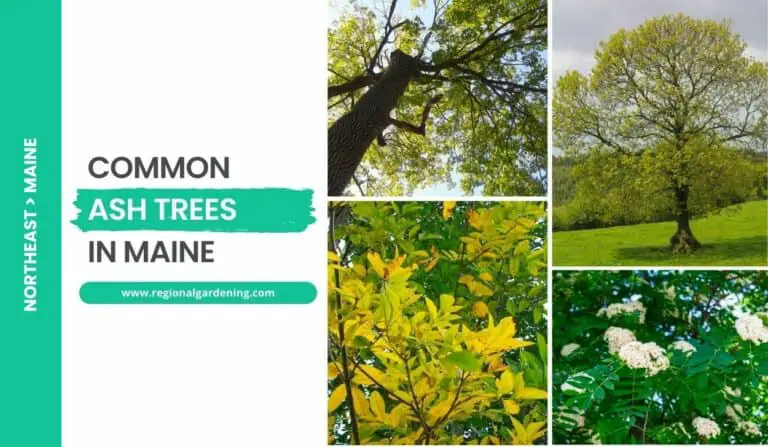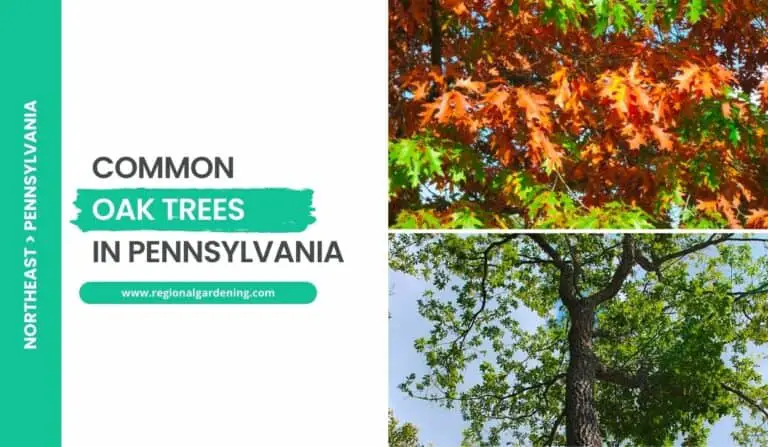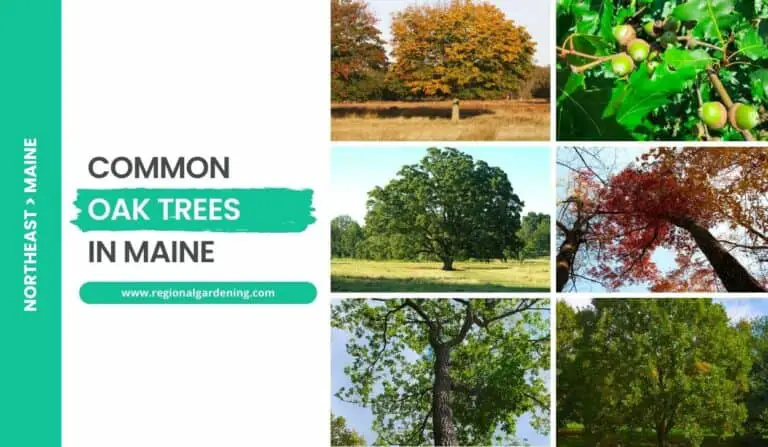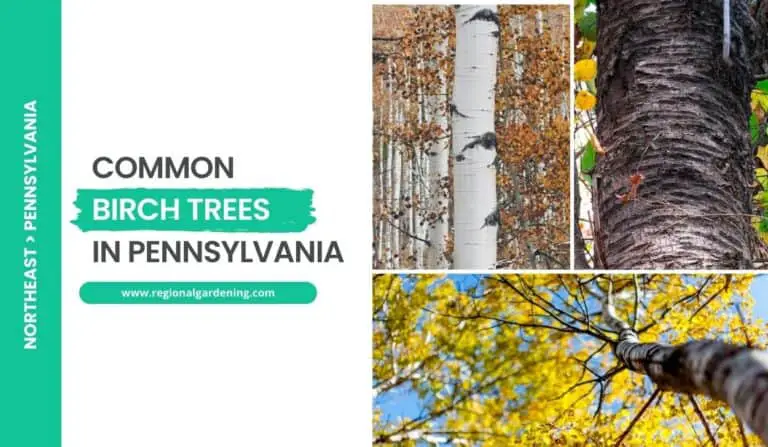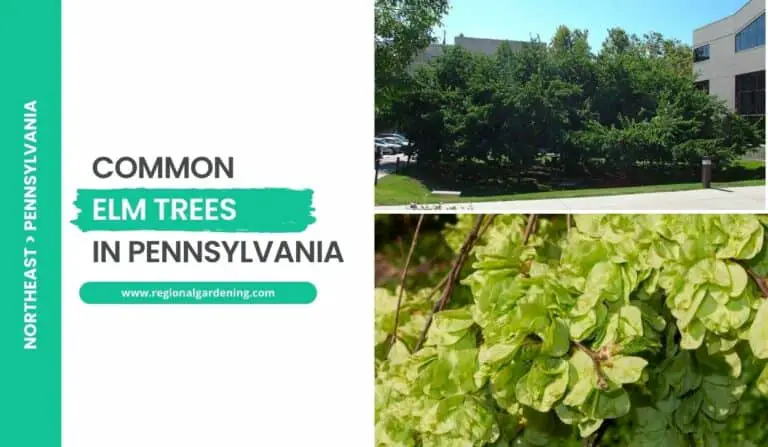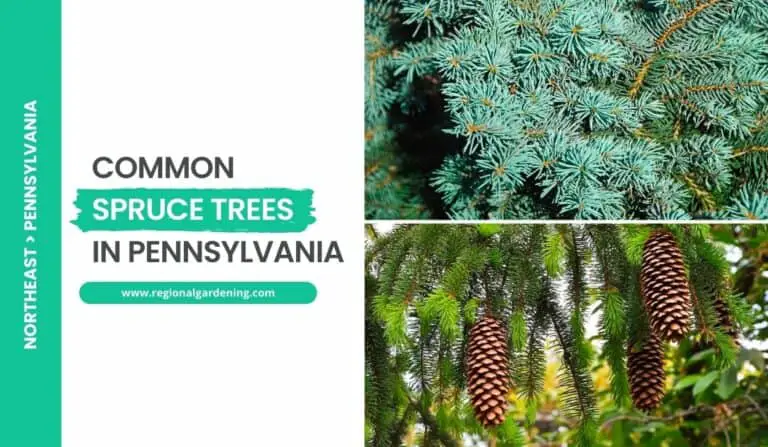7 Purple Trees In Pennsylvania (Stunning Varieties)
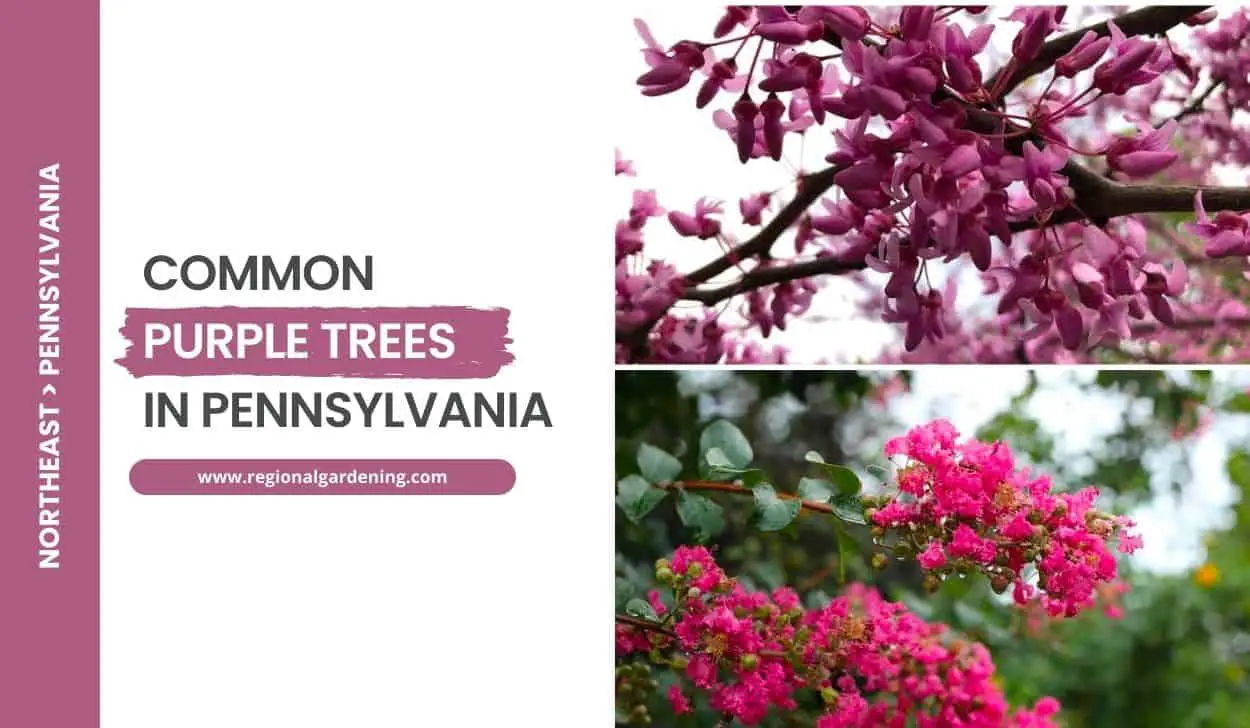
The landscape of Pennsylvania is often a tapestry of green, but there are a few hidden gems that add a splash of regal purple to the scenery. These magnificent purple trees not only draw attention with their vibrant colors, but they also exude mystery and elegance.
From the majestic purple-leaf plum to the unique purple robe locust, each of the purple trees in Pennsylvania has its distinctive beauty and allure.
In this article, we will look at seven of these enthralling trees, learning about their extraordinary characteristics, common uses, and the enchanting touch they add to the natural beauty of the Keystone State.
So, let’s begin.
1. Purple Crape Myrtle
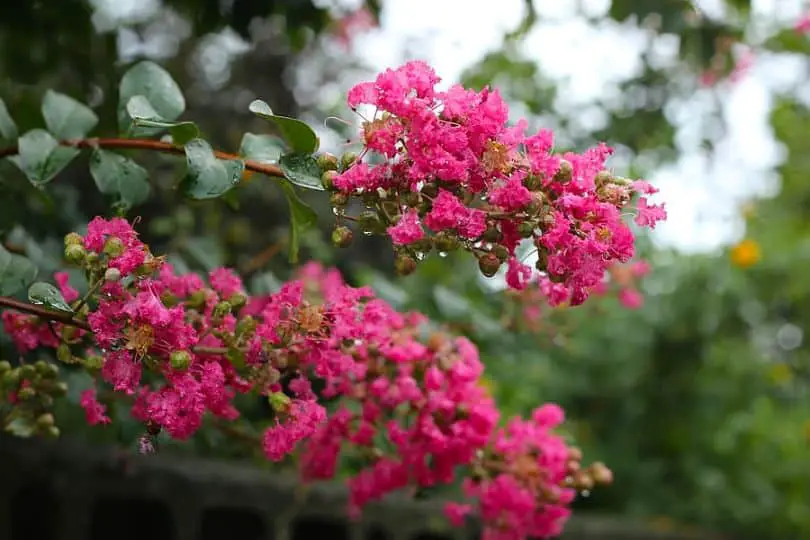
- Scientific Name: Lagerstroemia indica
- Common Name(s): Purple Crape Myrtle
- Mature Height: 10-20 feet (3-6 meters)
- Native Region: Southeast Asia
- Flowers: Clusters of purple flowers
- Fruit: Small, round capsules
- Uses: Ornamental tree, popular in Pennsylvania landscapes for its vibrant purple flowers and attractive bark. Also used in urban plantings due to its tolerance to pollution and ability to provide shade.
Purple Crape Myrtle, formally known as Lagerstroemia indica, is a deciduous tree native to Pennsylvania. It is native to Southeast Asia but has become popular due to its lovely blossoms and gorgeous bark. This tree has a rounded appearance and can reach a mature height of 10-20 feet (3-6 meters).
Purple Crape Myrtle leaves are elliptic in shape and can be plain, opposite, or whorled. The foliage is dark green, and the tree becomes a beautiful reddish-orange in the fall. Its bark is also appealing, with smooth, uneven patterns and a light brown to gray tint.
Purple Crape Myrtle grows in full sun or light shade and prefers well-drained soil in Pennsylvania. It is a low-maintenance tree that is resistant to common pests and diseases. However, pruning it in late winter or early spring is recommended to keep its shape and encourage new growth.
The Purple Crape Myrtle’s brilliant purple blooms, which bloom in enormous clusters during the summer months, are one of its features. The colorful blossoms attract butterflies and other pollinators, enhancing the beauty of any setting. After the blossoms have faded, the tree produces small, round capsules as fruits that last throughout winter.
Purple crape myrtle is an outstanding ornamental tree for Pennsylvania landscaping. Its beautiful blossoms and bark give visual appeal and color to landscapes and yards. It is also commonly utilized in urban plantings due to its pollution tolerance and capacity to give shade.
The Purple Crape Myrtle is popular due to its capacity to endure the region’s temperature and its mesmerizing display of purple blossoms. It is frequently used in gardens and parks as a specimen tree or in group plantings to create a focal point or a splash of color. Furthermore, because of its tiny size, it is ideal for smaller landscapes such as urban gardens and courtyards.
2. Purple-leaf Plum
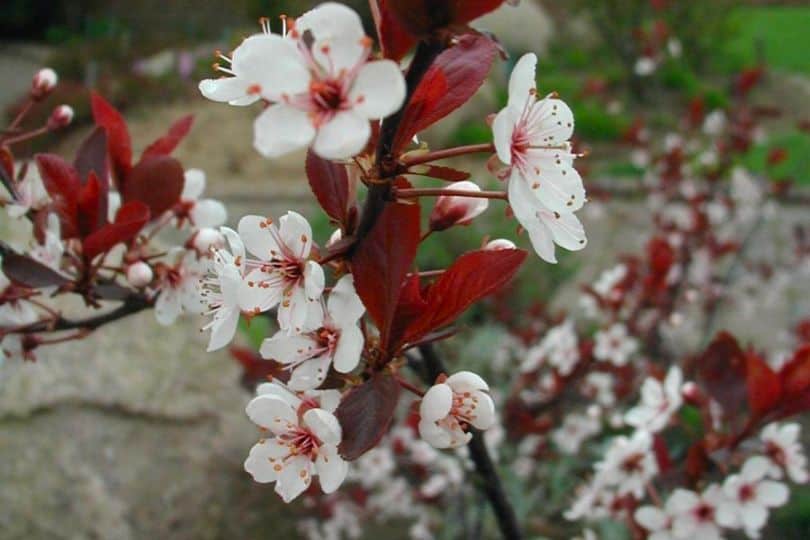
- Scientific Name: Prunus cerasifera ‘Atropurpurea’
- Common Name(s): Purple-leaf Plum, Cherry Plum
- Mature Height: 15-25 feet (4.5-7.6 meters)
- Native Region: Western Asia
- Flowers: Pink or white, 5-petaled blossoms in early spring.
- Fruit: Small, edible, reddish-purple plums.
- Uses: Ornamental tree, provides shade and color in landscapes.
The Purple-leaf Plum (Prunus cerasifera ‘Atropurpurea’) is a deciduous tree noted for its beautiful purple foliage. It has a rounded, spreading canopy and can reach a mature height of 15-25 feet (4.5-7.6 meters). This tree, which is native to Western Asia, has grown prevalent in Pennsylvania landscapes.
Purple-leaf Fig Plum has lovely dark purple foliage that stands out against the surrounding flora. The tree blooms in early spring with clusters of pink or white 5-petaled petals. These blooms not only look nice, but they also attract pollinators like bees and butterflies. The tree bears small, tasty reddish-purple plums as summer approaches. While the fruit is not commonly utilized in cooking, it provides visual flair to the tree.
Purple-leaf Plum is a popular decorative tree in Pennsylvania landscaping. Its unique purple foliage brightens up any garden or yard. During the summer, it provides shade and can be utilized as a focal point or specimen tree. This tree requires little care and can handle a variety of soil types, however, it likes well-draining soil. To get the greatest foliage color put it in a position that receives full sun.
The Purple-leaf Plum thrives in Pennsylvania’s climate. It can tolerate cold winters and hot summers in USDA zones 4-9. It is crucial to note that the tree is susceptible to diseases and pests such as black knot fungus and aphids, thus constant monitoring and care should be done.
Purple-leaf Plum is often utilized for landscaping in our area. Its purple foliage adds visual interest and can be utilized in gardens and yards to create contrast and focal areas. Furthermore, the ornamental appeal of the tree makes it a popular choice for both residential and commercial premises.
3. Purple Robe Locust
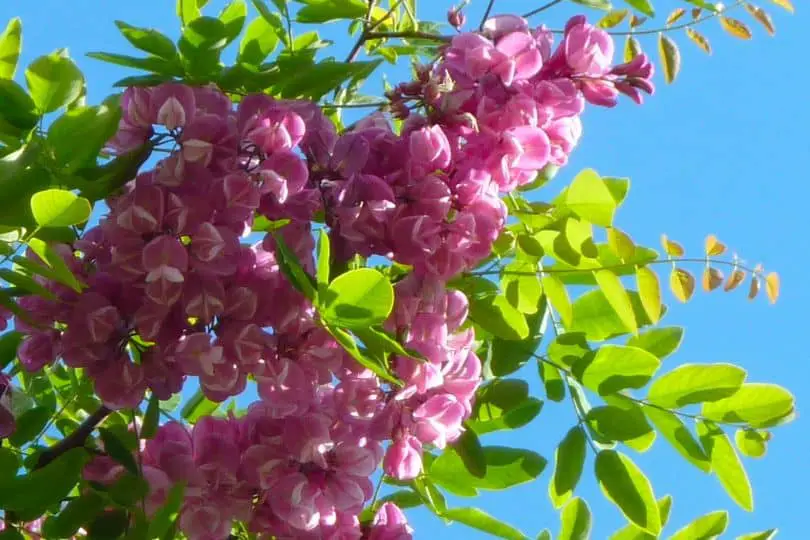
- Scientific Name: Robinia pseudoacacia
- Common Name(s): Purple Robe Locust, Black Locust, False Acacia
- Mature Height: 30-60 feet (9-18 meters)
- Native Region: Eastern North America
- Flowers: Clusters of purple pea-like flowers
- Fruit: Long seed pods containing small brown seeds
- Uses: Ornamental tree, erosion control, woodworking, honey production
The Purple Robe Locust, scientifically known as Robinia pseudoacacia, is a deciduous tree that can grow to be 30-60 feet (9-18 meters) tall when mature. It is endemic to the eastern areas of North America and is a member of the pea family, Fabaceae. The Purple Robe Locust, Black Locust, and False Acacia are all frequent names for this tree.
Purple Robe Locusts are distinguished by their gorgeous clusters of purple pea-like blossoms that bloom in late spring or early summer. These flowers are popular among bees and butterflies because they attract pollinators. In addition, the tree has pinnately complex leaves with tiny leaflets, giving it a delicate and fluffy appearance.
The Purple Robe Locust has brownish or grey bark that gets rough and furrowed as it ages. Long, hanging seed pods up to 8 inches (20 cm) in length are produced by the tree. These pods, which contain small brown seeds, remain on the tree throughout the winter before falling to the ground.
Once established, the Purple Robe Locust thrives in a variety of soil types and is drought-tolerant. Because of its magnificent flower show and little shadow, it is often utilized as an ornamental tree in Pennsylvania landscaping. Its spreading root system also helps with erosion management, especially on slopes and hillsides.
Locals in Pennsylvania value the Purple Robe Locust’s capacity to fix nitrogen in the soil, which increases soil fertility. This tree’s sturdy and rot-resistant wood is also utilized for carpentry projects such as fence posts and outdoor furniture. Furthermore, beekeepers favor the Purple Robe Locust’s purple blossoms for honey production.
4. Texas Mountain Laurel
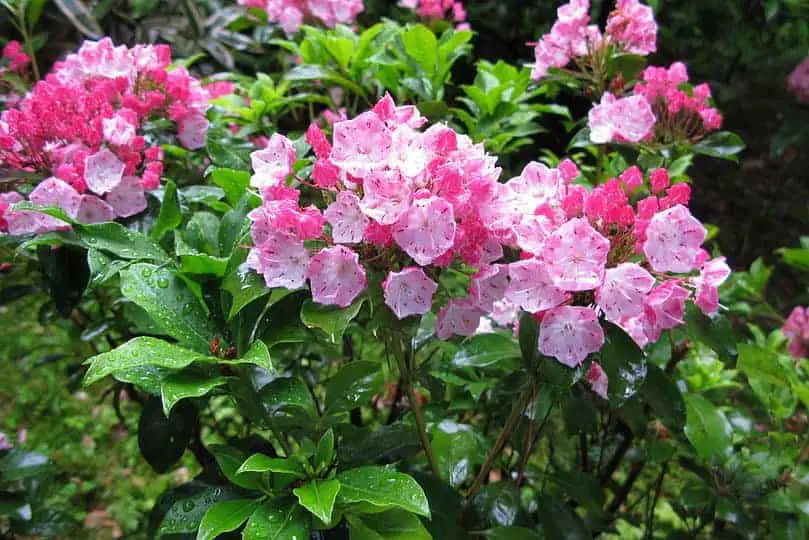
- Scientific Name: Sophora secundiflora
- Common Name: Texas Mountain Laurel
- Mature Height: 10-15 feet (3-4.5 meters)
- Native Region: Southwestern United States, particularly Texas
- Flowers: Clusters of purple flowers with a sweet fragrance resembling grape soda.
- Fruit: Elongated pods containing bean-like seeds.
- Uses: Ornamental tree, wildlife attractant, drought-tolerant landscaping.
The Texas Mountain Laurel, scientifically known as Sophora secundiflora, is a tiny evergreen tree native to the Southwestern United States, most notably Texas. It can grow to be 10 to 15 feet (3 to 4.5 meters) tall. It has compound and alternating dark green leathery leaves. This tree’s limbs are thick and twisted, and its bark is smooth and grayish-brown.
The Texas Mountain Laurel’s clusters of stunning purple flowers are one of its most distinguishing characteristics. These blooms have a pleasant aroma similar to grape soda and bloom in the spring, usually around March or April. Following flowering, the tree produces elongated pods containing bean-like seeds.
The Texas Mountain Laurel is well-adapted to its native range’s arid conditions, making it an excellent choice for drought-tolerant landscaping. Because of its lovely blossoms and evergreen foliage, it is also a favorite ornamental tree in Pennsylvania landscaping. The tree’s fragrant scent and colorful flowers attract wildlife, notably bees and butterflies.
The Texas Mountain Laurel prefers well-drained soil and full sun exposure for care. Once grown, it is low-maintenance and requires little watering. It is crucial to note that all parts of the tree, including the seeds, are deadly if consumed, so use caution if growing it near children or pets.
These trees are widely utilized as ornamental trees in landscapes to offer color and scent. Because of its drought tolerance, it is an excellent choice for xeriscapes and water-wise gardens. Its blossoms have a sweet fragrance, making it a popular choice for aromatherapy gardens or settings where perfume is desired. However, due to its toxicity, it is critical to use caution when planting this tree, especially if children or pets are present.
5. Jacaranda
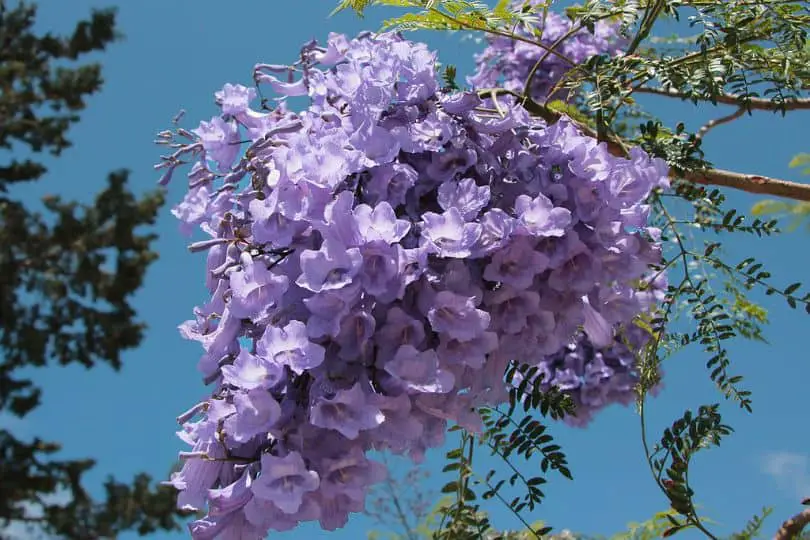
- Scientific Name: Jacaranda mimosifolia
- Common Name(s): Jacaranda, Jacaranda tree, Blue Jacaranda
- Mature Height: 20-50 feet (6-15 meters)
- Native Region: South America
- Flowers: Lavender-blue, trumpet-shaped flowers.
- Fruit: Thin, brown, elongated seed capsules containing small winged seeds.
- Uses: Ornamental tree, shade tree, timber for furniture and construction, medicinal uses.
Jacaranda mimosifolia, also known as Jacaranda or Jacaranda tree, is a lovely deciduous tree that matures to a height of 20-50 feet (6-15 meters). This tree is native to South America, specifically Argentina and Brazil, and is widely planted around the world for its beautiful display of lavender-blue flowers.
The Jacaranda tree is notable for its fluffy and delicate fern-like compound leaves. The leaves have a bright green tint that sways in the breeze, creating a lacy appearance. The tree also has smooth, grayish-brown bark, which adds to its overall beauty.
The Jacaranda tree can be an eye-catching centerpiece in Pennsylvania settings. It thrives in full sun and prefers well-drained soil. It can be planted when the danger of frost has passed in the spring. During dry spells, adequate watering is required for the tree’s healthy growth.
The Jacaranda tree’s magnificent display of lavender-blue blossoms is one of its main attractions. These trumpet-shaped blooms bloom in the spring or early summer and form huge clusters. The brilliant hue of the blossoms contrasts with the foliage of the tree, producing a stunning image in any scene.
The Jacaranda tree produces thin, elongated seed capsules after the flowering season. Small-winged seeds in these capsules can be distributed by wind. While the fruit of the tree is not commonly utilized in cooking, it does provide an unusual element to the tree’s overall aesthetic.
The tree’s lovely blossoms and delicate foliage make it a popular choice for enhancing gardens, parks, and public spaces. Furthermore, because of its durability and elegant grain, the timber from Jacaranda trees can be utilized for furniture and construction.
Medicinally, several components of the Jacaranda tree have been used to cure a variety of diseases in traditional medicine. Poultices, infusions, and decoctions made from the bark and leaves have been used to treat inflammation, discomfort, and skin disorders.
6. Eastern Redbud
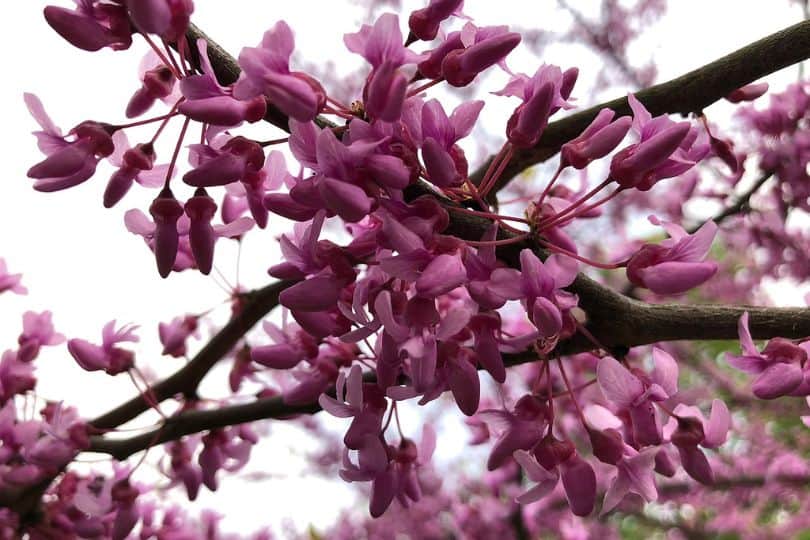
- Scientific Name: Cercis canadensis
- Common Name(s): Eastern Redbud
- Mature Height: 20-30 feet (6-9 meters)
- Native Region: Eastern United States
- Flowers: Pink or purple, pea-like flowers
- Fruit: Flat, brown pods containing small seeds
- Uses: Ornamental tree in landscapes, attracts pollinators, wood can be used for small crafts
The Eastern Redbud tree (Cercis canadensis) is a deciduous tree native to the eastern United States. It can reach a height of 20-30 feet (6-9 meters) and is distinguished by its stunning pink or purple blossoms. Because of its stunning spring blossoms and distinctive heart-shaped leaves, the Eastern Redbud is a popular choice for ornamental trees in Pennsylvania landscapes.
The Eastern Redbud has distinctive heart-shaped leaves that appear in April as a reddish-purple tint before turning a glossy green as the season advances. The foliage turns a bright yellow in the fall before dropping. The limbs of the tree are low and spreading, making a rounded crown. The Eastern Redbud’s bark is smooth and dark brown, with a striated texture.
The Eastern Redbud, a native of the eastern United States, can be found across Pennsylvania. It can be found in a wide range of environments, including woods, woodlands, and along stream banks. It prefers well-drained soil and light shade. Eastern Redbud can be planted as a single specimen or in groups in Pennsylvania landscapes to offer a dramatic display of purple and pink blossoms in the spring.
Before the leaves fully emerge, the Eastern Redbud produces eye-catching blossoms. The flowers are tiny, pink or purple, and resemble peas. They occur in bunches along the branches, making for an eye-catching aesthetic effect. After the petals fade, flat, brown pods with tiny seeds form. Although humans don’t typically eat it, this fruit gives the tree color in the late summer.
The Eastern Redbud is low-maintenance in terms of upkeep. It grows best in moist, well-drained soil and benefits from regular watering, especially during dry spells. Pruning is most effective in the late winter or early spring. Eastern Redbuds are hardy and can endure a wide range of soil conditions, making them ideal for a wide range of Pennsylvania landscapes.
The Eastern Redbud is a beautiful ornamental tree with lovely spring flowers and foliage. It is a popular choice for home gardens, parks, and other landscaped places. The tree’s bright blossoms attract pollinators like bees and butterflies, making it an excellent addition to any garden.
Furthermore, because of its fine texture and gorgeous color, the wood of the Eastern Redbud is sometimes used for tiny crafts such as cutting and turning.
Similar Articles
- Common Flowering Trees In Pennsylvania
- Common Maple Trees In Pennsylvania
- Common Cherry Trees In Pennsylvania
- Common Pine Trees In Pennsylvania
- Native Locust Trees In Pennsylvania
- Common Nut Trees In Pennsylvania
- Common Cedar Trees In Pennsylvania
- Common Palm Trees In Pennsylvania
- Common Birch Trees In Pennsylvania
- Common Aspen Trees In Pennsylvania
- Common Oak Trees In Pennsylvania
- Common Ash Trees In Pennsylvania
- Common Elm Trees In Pennsylvania
- Common Spruce Trees In Pennsylvania
- Pink Flowering Trees In Pennsylvania
- White Flowering Trees In Pennsylvania
Common Purple Trees In Pennsylvania – Sources
The Regional Gardening team makes sure that the information in our articles is accurate by only using sources that are known to be trustworthy. Some of these sources are peer-reviewed journals from government agencies, well-known universities, and scientific research organizations.
- Native Plant Resources, Pennsylvania Native Plant Society
- Trees & Shrubs Varieties, PennState Extension
- Landscaping With Natives, Pennsylvania Department Of Conservation, & Natural Resources.
- Explore Pennsylvania Forests, Pennsylvania Department Of Conservation, & Natural Resources.


